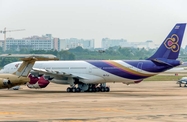Thailand will have to move quickly to meet requirements for economic integration with ASEAN, set for 2015, with transport policy one of the key issues that will have to be addressed in the lead-up to the single market.
The government of Prime Minister Yingluck Shinawatra has already come under fire from the opposition Democrat Party and other critics for not meeting in full some of the transport-related promises it made during the recent election campaign, such as implementing a flat rate for public transportation in Bangkok. There has also been criticism over plans to review some of the previous government’s projects, such as the national high-speed rail network, which some say will further delay much-needed infrastructure investments.
While some of these issues are merely a matter of a new government establishing itself and adapting to daily economic realities rather than the charged atmosphere of campaigning, the Pheu-Thai coalition will have to look further down the track in its transport planning, especially with the launch of the ASEAN Economic Community (AEC) less than four years away.
Core to the AEC concept is the free movement of goods and labour and the lifting of restrictions on trade and services. At the heart of these goals is an advanced transport network. In the lead-up to the AEC, it falls to the Yingluck government to ensure this network is built.
Fortunately, the government will be able to access sound counsel. In late September the National Research Council of Thailand (NRCT) and the Thailand Research Fund announced they would be carrying out a series of studies into the transport and logistics implications of the AEC.
According to Narong Pomlaktong, the research director for transport and logistics at the NRCT, 13 separate reports covering three main fields – infrastructure management, supply chain industry redesign and meta-analysis – will be prepared.
“The series of studies will benefit not only those private logistics firms involved in the production and transport logistics supply chain, but also the government as it seeks to create a strategic logistics development plan for the country,” Narong said when unveiling the project on September 26.
The second strand of the studies will focus on developing a model of how specific industries and areas in the region will adjust to the AEC, and then determine what would be best-case strategies for the supply chain in Thailand.
The third strand will look at the competitiveness of Thai transport logistics firms, in part through analysing the results of the first two categories to determine the long-term impact of the AEC on Thailand’s transport sector. The combined outcomes are intended to help shape the government’s policy when drafting a strategic supply-chain development plan. The private sector can also use the data to make decisions about which ASEAN countries it should focus on and to estimate the returns they can expect.
Initial work on the projects is expected to begin after November, with all 13 to be up and running within a year. The studies, and the recommendations they will produce, cannot come too soon for many in the transport industry. At the end of August industry representatives called on the government to put in place a clearly defined policy to advance the logistics sector, especially given the tight timeframe imposed by the forthcoming integration with the rest of ASEAN.
Sumate Tanthuwanit, the president of Regional Container Lines, one of Thailand’s largest shipping firms, told a conference on economic competitiveness on August 30 that some of the country’s ports did not compare favourably with those in the region in terms of handling capacity or costs. The answer, Sumate said, was improving infrastructure and implementing better practices.
“If the government were to make the seaport and inland transport more competitive, Thailand could become a regional gateway for marine and inland transport between ASEAN and other regions, such as the EU and the US. Besides, it can be a hub for logistics transport within ASEAN,” he said.
Among the many issues facing Thailand are deciding on whether the country’s railways should adopt the standard gauge used by most of the other ASEAN members or stick with the one-metre gauge currently in use. If Bangkok does not convert existing track to the wider gauge, or at least build new lines to meet the international standard, transporters will face lengthy delays resulting from the need to load and offload rail cargos when entering or leaving Thailand. Such logistical bottlenecks could prompt transport firms to look at routes bypassing Thailand when moving freight across the region.
If a sound transport policy is rolled out, one that meets the future needs of an economy integrated with that of its neighbours, the government would be able to leave a positive legacy for Thailand that will endure. And the sooner that policy is implemented, the sooner Thailand can connect to other ASEAN networks.

